Introduction
Freelance digital marketing is exploding not because it’s trendy, but because it works.
Brands are ditching bloated agencies in favor of lean, specialized freelancers who move fast, deliver results, and speak directly to their audience. That shift has opened the door for marketers with real skills to step in and build something meaningful.
Whether you’re launching from scratch or looking to scale what you already have, this guide will show you how to carve out your niche, build a magnetic personal brand, and land clients who value more than just low prices.
This isn’t about overnight success or pitching strangers in DMs. It’s about becoming the go-to expert in a space that needs you and knowing exactly how to get paid for the value you bring.
Key Takeaways
Freelance Digital Marketing in 2025
- Freelance digital marketing offers flexibility, creative freedom, and client control — but it demands focus, positioning, and a results-first mindset.
- Niched focus is essential: fastest growth comes from targeting one industry, service, or platform where you can dominate.
- Success depends on positioning, not just skills — standout branding, authority-building content, and strong lead generation systems set you apart.
- High-value clients don’t come from job boards — they come from trust, proof, and relationships built through visibility and consistency.
- Your offer is everything: packaging services around outcomes (not just deliverables) is what gets you hired again and again.
Disclaimer: I am an independent Affiliate. The opinions expressed here are my own and are not official statements. If you follow a link and make a purchase, I may earn a commission.
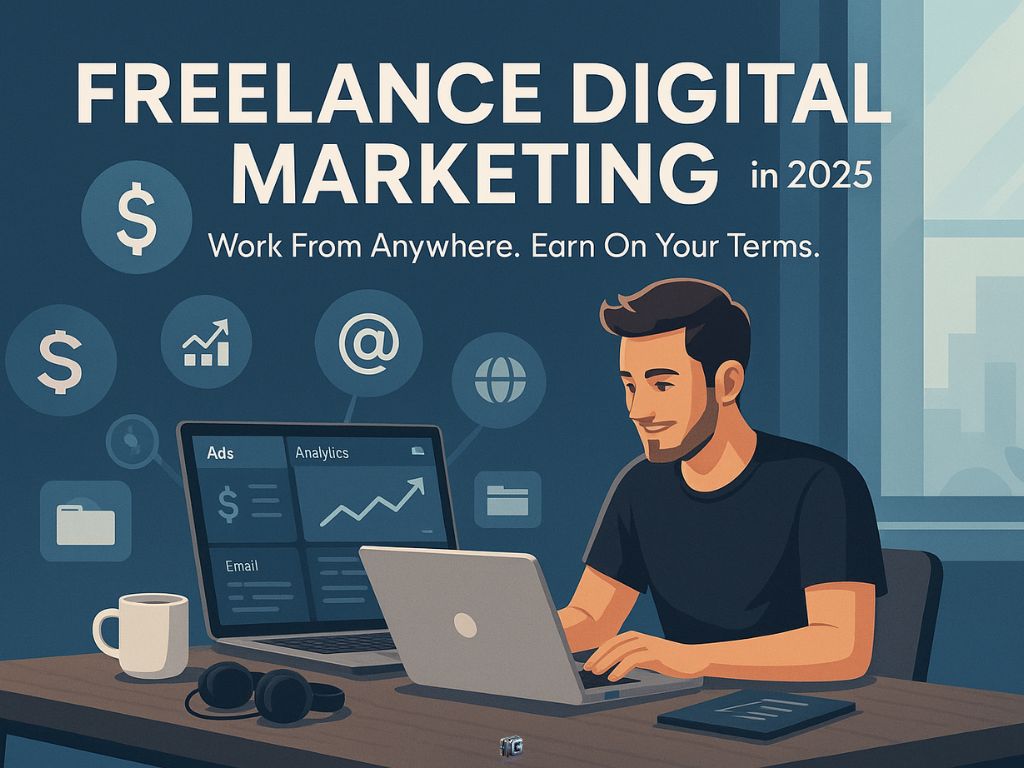
What Is Freelance Digital Marketing?
Freelance digital marketing is the business of helping clients grow online without working for an agency or full-time employer. You work independently, offering specialized services like SEO, paid ads, social media, email marketing, content creation, or funnel building.
You choose your clients, set your prices, you decide when and how you work.
But here’s what separates the amateurs from the professionals: Freelancing isn’t just a job. It’s a business. And the most successful freelance marketers don’t sell hours, they sell outcomes.
Freelance digital marketing is for creators, strategists, and problem-solvers who want freedom without a ceiling. But that freedom comes with responsibility. You’re not just running campaigns. You’re running a business that needs positioning, systems, and a pipeline of leads.
Freelance Digital Marketing Services You Can Offer
You don’t need to do it all. In fact, the fastest path to success is specialization picking one or two services and becoming undeniably good at them.
Here are some of the most in-demand freelance digital marketing services:
- SEO (Search Engine Optimization): Help businesses rank higher on Google and drive organic traffic through keyword research, on-page optimization, and content strategy.
- Paid Advertising (PPC): Run high-converting ad campaigns on platforms like Google Ads, Facebook, or TikTok to generate leads and sales.
- Email Marketing: Write and automate email sequences that nurture leads, launch offers, and increase customer retention.
- Content Marketing: Create blogs, articles, and guides that build authority, rank in search, and generate consistent traffic.
- Social Media Management: Grow and engage audiences on platforms like Instagram, LinkedIn, and YouTube with strategic content and scheduling.
- Sales Funnel Building: Design and build lead magnets, landing pages, and automated sequences that guide people from curious to converted.
- Analytics & Tracking: Set up dashboards and KPIs that help businesses understand what’s working and where to scale.
Start by picking the service that aligns with your strengths then get laser-focused on delivering transformational results. Because when your work drives growth, your value skyrockets.
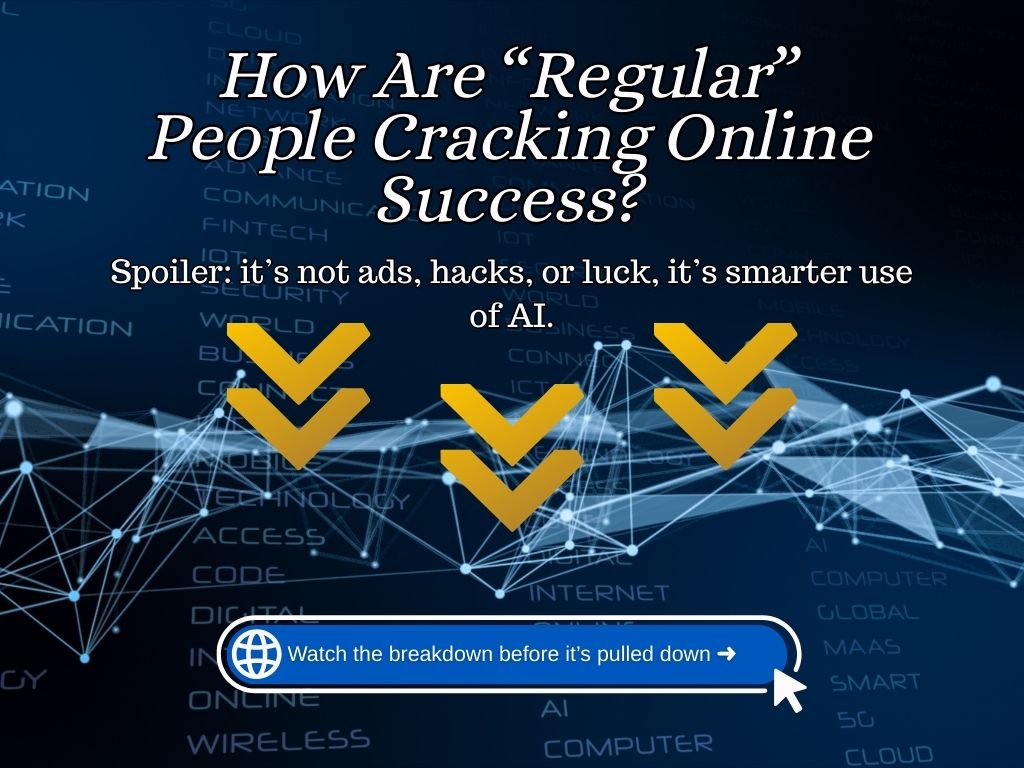
Who Hires Freelance Digital Marketers?
The demand isn’t just growing, it’s exploding. Businesses of every size are ditching bloated agencies in favor of nimble, specialized freelancers who can move faster and get results.
Here’s who’s actively hiring freelance digital marketers:
- Startups & Tech Companies: They need fast growth, lean teams, and scalable strategies. Freelancers help them hit the ground running.
- Coaches, Consultants & Creators: Personal brands rely on visibility, funnels, and content and often don’t have in-house marketers.
- E-commerce Brands: Whether it’s SEO for Shopify or TikTok ads for product launches, digital specialists are their secret weapon.
- Agencies & Studios: Many agencies outsource overflow work to freelancers behind the scenes. That means steady gigs if you deliver quality.
- Local Service Businesses: From dentists to yoga studios, local businesses need help showing up online and freelancers can be the solution.
The real kicker? Most of these clients don’t care about your degree. They care about one thing: Can you help them grow?
When you can show proof of that even just a few wins the opportunities don’t stop.
How to Start a Freelance Digital Marketing Business
You don’t need a fancy portfolio or an MBA to launch. What you need is a strategy one that gets you from “nobody knows me” to “clients are DMing me.”
Here’s how to start smart:
1. Pick One High-Value Skill to Start With
Don’t try to be everything to everyone. Choose one offer like email marketing, paid ads, SEO, or funnel building and get damn good at it. Specialists win more often (and charge more) than generalists.
2. Build a Micro-Portfolio Fast
No clients yet? No problem. Create 1–3 short case studies or samples. Audit a big brand’s site, write a mock email campaign, or run a small test ad and break down the results. Prove you can do the work.
3. Set Up Your “Client Magnet” Presence
You don’t need a big website. You need a lean online presence that says:
- Here’s what I do.
- Here’s who I help.
- Here’s how to work with me.
This can be as simple as a solid LinkedIn profile, a Notion page, or a one-page site just make it clear and credible.
4. Start Outreach Without Feeling Sleazy
DM local businesses. Answer questions in Facebook groups. Join Slack communities. Help people for free at first, then offer paid support. Build trust, then offer solutions.
5. Price Like a Pro, Not a Beggar
Even as a beginner, you’re solving business problems not just selling time. Charge based on value, not hours. And when it’s time to talk numbers, say it with confidence.
Start lean. Start smart. Just start.
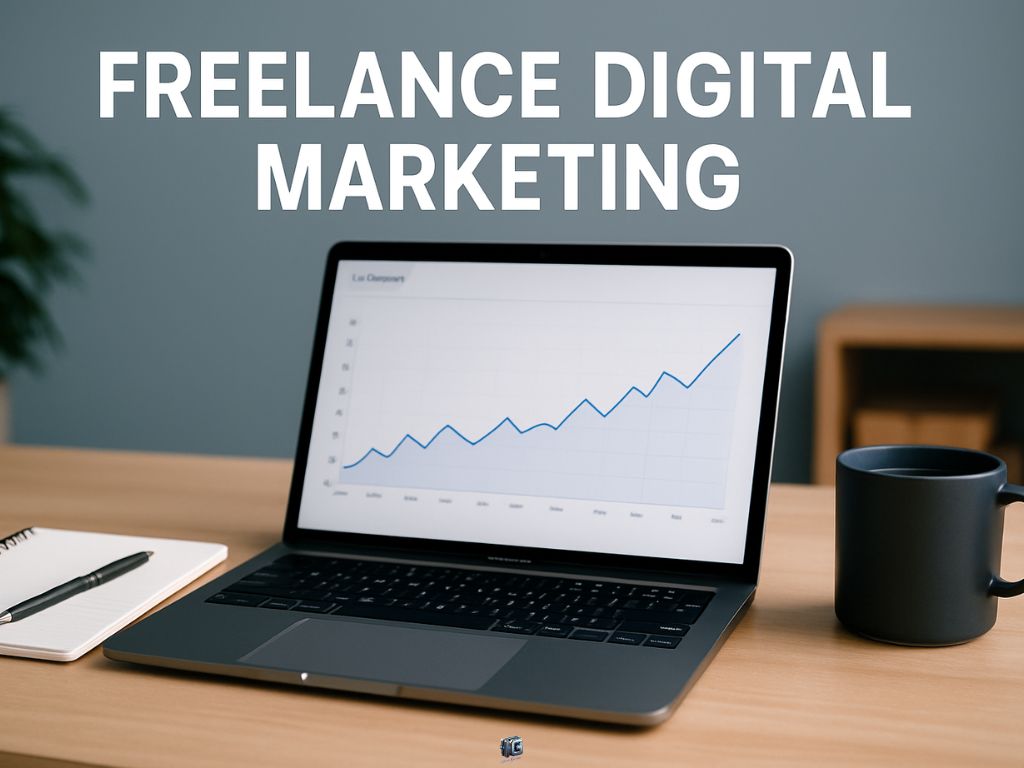
Most In-Demand Freelance Digital Marketing Services
In the digital marketing world, not all services pay the same. Some are overcrowded. Others are too vague to sell. But a few? They’re red-hot, recession-resistant, and easy to package for premium clients.
Here’s where the smartest freelancers are focusing in 2025:
Email Marketing That Converts
Most businesses have a list. Few know what to do with it. That’s where you come in. If you can write compelling welcome sequences, promo campaigns, or abandoned cart flows that drive clicks and revenue, you become a profit partner not just a writer. Add automation platforms like Klaviyo or ConvertKit to your skillset and you’re instantly more valuable.
Paid Ads (Meta, Google, TikTok)
Businesses don’t want more followers. They want more sales. Paid ads when managed well deliver that fast. If you can build campaigns that bring in leads or purchases for less than they cost to run, you’re printing money for your clients. This skill scales beautifully, especially when paired with high-converting landing pages.
SEO and Content Strategy
SEO is not dead. But lazy blog posts are. Brands are looking for strategic writers who understand keyword intent, internal linking, and how to turn traffic into customers. Combine that with topical authority planning and you’ve got a long-term retainer in the making.
Funnel Design & Optimization
A digital funnel is the difference between “meh” traffic and consistent sales. If you know how to structure lead magnets, landing pages, upsells, and automated follow-ups that guide people to buy, you’re offering a complete revenue system. Learn tools like Systeme.io, ClickFunnels, or Leadpages and you become the architect behind your client’s income engine.
Social Media with ROI, Not Just Likes
Basic posting isn’t enough anymore. Brands want engagement that drives clicks, traffic, and conversions. Freelancers who offer strategic content (think reels, carousels, UGC campaigns, or even viral hooks) can stand out fast. Bonus points if you tie content to actual business goals like lead gen or email list growth.
Conversion Copywriting
Behind every great ad, landing page, and email sequence is someone who knows how to sell with words. That someone could be you. Master the psychology of persuasion and you’ll never run out of clients. Copywriters who focus on revenue-driving projects (like launches, promos, and funnels) are always in demand.
The Winning Formula: Don’t try to do everything. Choose a service that solves a clear pain point and drives measurable results. When you position yourself as a revenue driver not just a task-taker your rates go up, your stress goes down, and your clients stay longer.
How to Build a Portfolio Without Clients (Yet)
This is where most aspiring freelance digital marketers get stuck. “I can’t get clients without a portfolio… but I can’t build a portfolio without clients.” Wrong.
You don’t need permission to prove your skills. You need initiative.
Here’s how to build a standout portfolio from scratch even if nobody’s hired you (yet):
1. Create Spec Work That Solves Real Problems
Pick a niche and create sample deliverables as if a client paid you. Write a welcome email series for a fictional e-commerce brand. Design a sales funnel for a fake online course. Build a case study-style blog post that shows your SEO skills. Make it look legit because if it solves a real problem, it is legit.
2. Use Results from Personal Projects
Run your own campaigns. Build an email list. Test Facebook or TikTok ads with a small budget. Grow an Instagram page around a niche you care about. These are your results. And if you can do it for yourself, you can do it for a client. It shows initiative, execution, and data everything prospects want to see.
3. Offer One Free Project Strategically
One. Not ten. Find a small business, creator, or startup you like and offer to build something for free — in exchange for a testimonial and permission to showcase the results. Position it as a test project, not a favor. Set a timeline. Define a deliverable. Overdeliver.
4. Build a Personal Brand Around Your Service
Use your own online presence to demonstrate what you offer. If you’re a content strategist, your posts should reflect that. If you’re a landing page expert, your own site better be optimized. This is the portfolio power most freelancers overlook and it can be the difference-maker.
5. Package Your Work Like a Pro
Even if you only have a few pieces, make them shine. Build a simple Notion or PDF portfolio with clean visuals, before-and-after examples, and a clear narrative around what the work achieved. It’s not about quantity, it’s about clarity and perceived value.
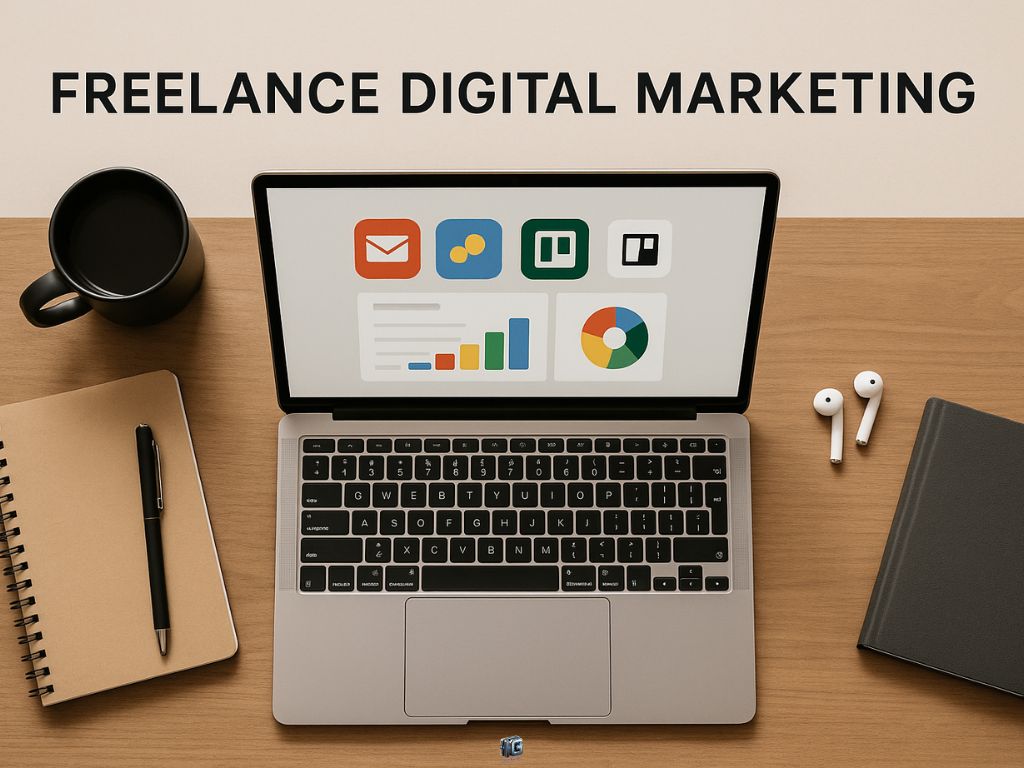
Pricing Your Freelance Digital Marketing Services
Pricing isn’t just a numbers game, it’s a confidence game. Set your rates too low, and clients won’t take you seriously. Too high, and you’ll scare off leads before you’ve built trust. The key? Price based on value, not desperation.
Start with the Scope, Not the Hour
Hourly rates are a trap. They reward slowness, not results. Instead, price your services by project or outcome. A landing page that converts better? That’s worth more than just “10 hours of work.”
Use Tiered Packages
Give clients options: a basic package, a standard one, and a premium tier. This creates natural upsells and lets you anchor your prices higher. Example:
- Starter: One email sequence
- Growth: Email + landing page + automation setup
- Pro: Everything above + analytics setup + optimization
It shifts the conversation from “Can I afford you?” to “Which package makes the most sense?”
Benchmark with Confidence, Not Comparison
Do your research but don’t copy other freelancers blindly. Consider your skills, niche, and value delivered. If you’re helping clients drive revenue or save time, your pricing should reflect that.
Expect to Adjust
Your first few projects will teach you a lot about pricing. You’ll learn how long things really take, where the scope creeps, and what clients are willing to pay. Don’t lock yourself into “cheap” raise your rates as your confidence and results grow.
How to Find Clients for your Freelance Digital Marketing Business
You don’t need a giant following or an ad budget to land your first freelance clients. What you need is strategy, visibility, and a message that speaks directly to the people already looking for help.
Start With Who You Know
Your first few clients are often hiding in plain sight former coworkers, business owners in your network, or even people who follow you on LinkedIn. Don’t be shy about reaching out. A personal message can go a long way.
Leverage Freelance Platforms (Smartly)
Sites like Upwork, Contra, or Toptal can give you quick exposure, but only if you position yourself correctly. Skip the race to the bottom niche down, optimize your profile for a specific result (like “email marketing for coaches”), and bid like a pro.
Use Social Proof to Attract Inbound Leads
Every time you finish a project, ask for a testimonial. Post the results. Break down your process. Share behind-the-scenes wins on LinkedIn or X. People hire based on trust and nothing builds trust like visible proof.
Offer Value First, Then Pitch
If you’re cold emailing or DM’ing potential clients, lead with value. Point out a gap in their marketing. Offer a tip. Share a mini audit. When you give first, the pitch becomes a no-brainer.
Build a Simple Website or Portfolio Page
A one-page site with your services, a few case studies, and a contact form is all you need to start. Make it clear, benefit-driven, and laser-focused on the problems you solve.
Boost your services by adding digital products to your freelance offers.

Common Challenges in Freelance Digital Marketing
Going solo has its perks but it’s not without friction. If you’re not prepared, the same freedom you crave can turn into stress, stagnation, or burnout. Here’s what most freelancers struggle with and how to stay ahead of it.
1. Feast-or-Famine Income Cycles
One month you’re slammed with work, the next you’re scrambling for leads. It’s a common trap, but fixable.
Solution: Never stop marketing yourself. Create a simple weekly routine: pitch, post, and prospect even when you’re booked. Build a waitlist. Turn short-term clients into long-term retainers.
2. Setting Boundaries With Clients
Revisions pile up. Messages ping at midnight. Scope creep sneaks in.
Solution: Set expectations upfront. Use contracts. Create a “services guide” that spells out what’s included and what’s not. You’re not just a freelancer. You’re a partner with a process.
3. Undercharging or Undervaluing Your Work
It’s tempting to take any job when you’re starting out but low rates trap you in low-impact work.
Solution: Focus on outcomes, not tasks. Show the ROI of your service. And when in doubt, charge more. Confident freelancers don’t wait to “feel ready” they set the bar and rise to meet it.
4. Wearing All the Hats
You’re the marketer, strategist, salesperson, bookkeeper, and designer. It gets exhausting.
Solution: Automate what you can. Use templates. Batch tasks. And as soon as you’re able outsource. Even small systems can create huge breathing room.
You’re not failing if you hit these roadblocks. You’re leveling up. The key is building habits that turn chaos into clarity.

Freelance Digital Marketing Tools You’ll Actually Use
Most freelancers don’t need a bloated stack of tools, they need lean, effective, ROI-focused systems. Tools that don’t just look good in tutorials, but actually save time, automate tedious tasks, and help you deliver results for clients fast.
Here’s what’s worth your attention:
1. Project & Client Management
- Trello or ClickUp – For tracking client work, content calendars, and campaign assets. Dead simple. Easy to share with clients.
- Google Workspace – Still the backbone for docs, contracts, and collaboration.
2. Marketing Automation
- MailerLite or ConvertKit – Great for managing client email campaigns without the complexity of enterprise tools.
- Zapier – Connects everything together. Automate lead captures, CRM updates, reporting you name it.
3. Content Creation & SEO
- Canva Pro – Unless you’re a designer, this will be your go-to for social graphics, lead magnets, and branded templates.
- Surfer SEO or NeuronWriter – Helps you write blog content that actually ranks (and clients notice).
- Grammarly or Hemingway – No more sloppy emails or sales copy.
4. Analytics & Reporting
- Google Analytics & Looker Studio – Create clean, visual reports that clients can understand at a glance.
- Ubersuggest or Ahrefs (Lite plans) – Find keyword gaps, track rankings, and spy on competitors without breaking the bank.
5. Communication
- Slack or Loom – Use Loom to record client updates and walkthroughs without endless calls. Slack works great for ongoing communication with premium clients.
What You Don’t Need: expensive CRMs, bloated social schedulers, or complicated funnels unless you’re managing teams or large ad budgets.
The real secret: A tight tool stack + knowing how to use it faster and better than your competition.
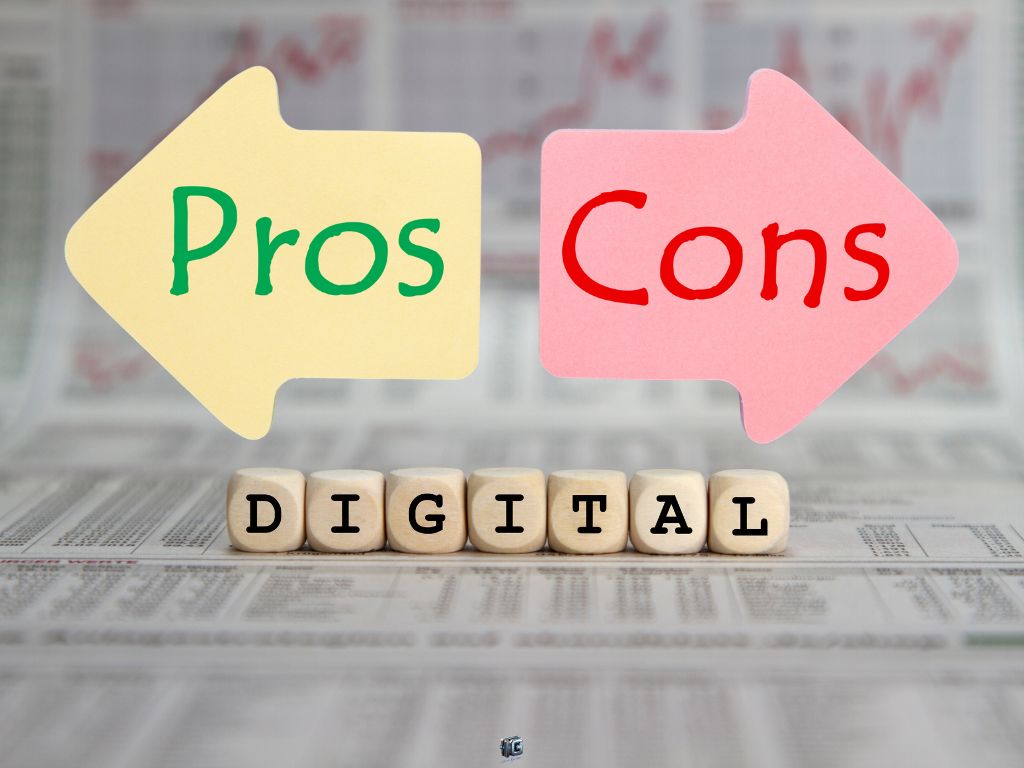
Pros and Cons of Freelance Digital Marketing
Freelance digital marketing has its perks but it’s not all flexible schedules and laptop-on-the-beach dreams. Here’s a real-world look at what works… and what can catch you off guard.
The Pros
Freedom to Choose Clients & Projects: You decide who to work with and what type of marketing you specialize in SEO, social, email, paid ads, or all of it.
Work From Anywhere: You’re not chained to a desk. With just a laptop and Wi-Fi, you can run your business from home, a coworking space, or halfway across the globe.
Scalable Income Opportunities: Unlike salaried roles, you can increase your rates, add new services, or even sell digital products. You’re not limited to one paycheck.
Creative Control: You call the shots. You can build your personal brand, test bold ideas, and ditch the red tape that slows down agency or corporate life.
The Cons
Feast or Famine Cycles: Client work isn’t always steady. Some months you’re swamped; others, it’s crickets. Without a system to attract leads, you can burn out fast.
You Wear Every Hat: You’re the marketer, project manager, sales rep, and bookkeeper. If you’re not careful, admin tasks can eat your whole week.
No Benefits or Guarantees: No sick days, no health insurance, no guaranteed income. Freelancing rewards results, not time served.
Client Headaches Happen: Unpaid invoices, scope creep, and disappearing clients come with the territory. Learning how to vet leads and set boundaries is critical.
Bottom line: Freelance digital marketing is high-reward but only if you treat it like a real business, not a side hustle hobby.
Check out our Freelance Writing Guide for a full breakdown of what it really takes to succeed.
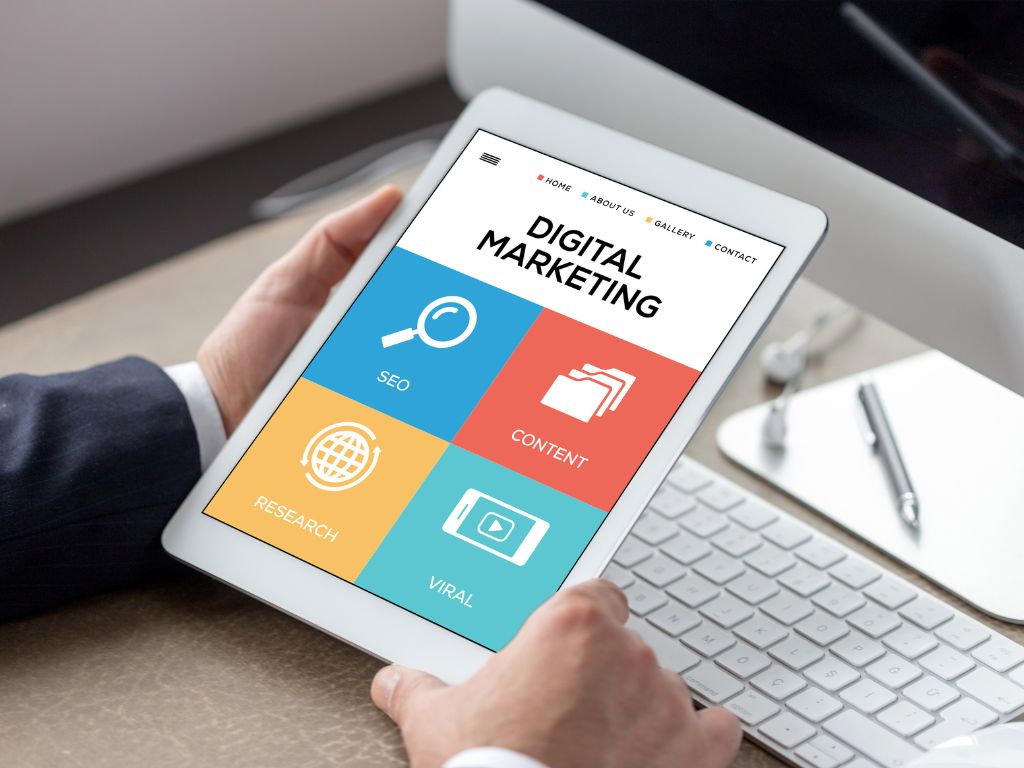
Final Thoughts: Is Freelance Digital Marketing Right for You?
Freelance digital marketing isn’t just a career path, it’s a lifestyle upgrade for those who crave freedom, flexibility, and full control over their income.
But let’s be clear: this isn’t passive. It’s not “set it and forget it.” You’ll need to sharpen your skills, pitch relentlessly, and keep delivering real results.
If you can do that, the rewards are unmatched. You work with brands you believe in, set your own rates, and build a business that grows with you not one that burns you out.
Start simple. Choose a niche. Find your first client. Build a portfolio that proves you know your stuff. Then rinse and repeat.
No gatekeepers. No waiting. Just action. Your freelance digital marketing journey doesn’t start when you’re “ready.”
It starts the moment you decide. Let’s make it count.

FAQ: Freelance Digital Marketing Basics
What does a freelance digital marketer do?
They help businesses grow online by offering services like SEO, content creation, email campaigns, paid ads, and social media management on a project or contract basis.
Do I need a degree to be a freelance digital marketer?
Nope. Clients care more about results than credentials. Real-world skills, a solid portfolio, and proof you can deliver are what matter most.
How much can freelance digital marketers charge?
Rates vary depending on your niche, experience, and location. Beginners may charge $25–$50/hour, while specialists and seasoned pros can command $100+ per hour or premium flat fees.
Where do freelancers find clients?
Freelancers use job boards, cold outreach, social media, referrals, and online communities. Building a personal brand and content strategy can attract inbound leads over time.
What skills are most in demand?
SEO, copywriting, paid advertising (Google Ads, Facebook Ads), funnel building, email marketing, and analytics are consistently hot across industries.
Can I freelance part-time while working a job?
Absolutely. Many digital marketers start freelancing as a side hustle before going full-time. Just make sure your schedule and employer contract allows it.
What’s the difference between a freelancer and a consultant?
Freelancers usually execute tasks (e.g., write emails, manage ads). Consultants provide strategy and guidance. As you grow, you may do both or evolve into an agency model.
1 Comment
Freelance Writing: The Dark Side (And How to Beat It) - Ismel Guerrero. · April 28, 2025 at 6:58 pm
[…] sure to check out our freelance digital marketing guide if you’re ready to grow beyond […]